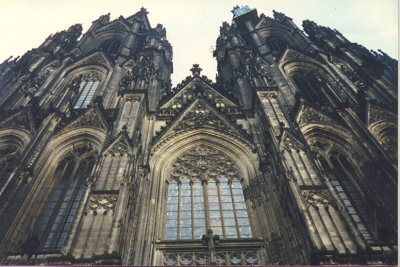 The awesome Gothic Cologne Cathedral. Built over 600 years, intentionally not destroyed in the war, although the train station and bridge behind it were taken out. |
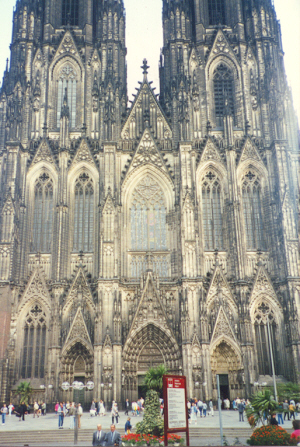 I was so impressed, I returned the following year to spend a semester in Cologne. |
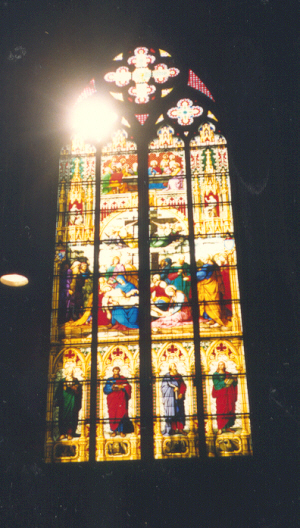 Stained glass inside the Cathedral. A lucky shot! |
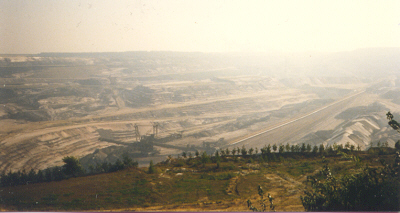 Massive coal pits west of Cologne. |
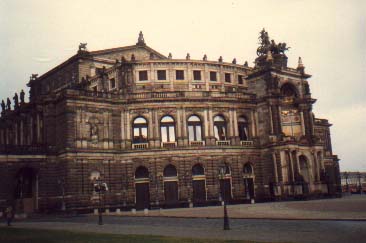 My school took a tour of East German in November 1987. Dresden on the Elbe River. I was the only American in the group; the rest were mostly Swiss and Dutch. Being a student of political science at the height of the Cold War, I had a few nervous (however irrational) moments crossing the borders, going through Checkpoint Charlie (I had bought a book documenting the escapes and failed escapes, making it an illegal item to take into East Germany). Mostly we were just inconvenienced with long waits and the usual run-around. |
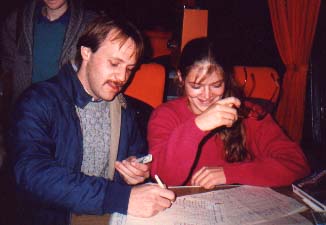 Once inside East Germany, we were obliged to take an East German tour guide with us, who was supposed to give us their version of things and highlight the triumphs of socialism, which looked rather poor in the eyes of most of the wealthy Swiss I was travelling with. Here I am exchanging good western Marks for the flimsy East German marks and proving to our tour guide that all Americans aren't so bad. As for shopping, there was nothing to buy even if the money had been worth anything, so I just saved them as souvenirs. I did manage to buy a cheap edition of Heine poems and some aspirin substitute (no real aspirin was available) to fight the headaches from the high-sulphor coal used for heating. |
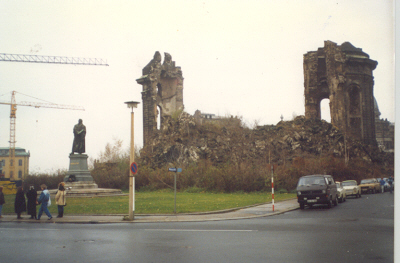 Dresden on the Elbe River. Martin Luther guards a pile of rubble left over from the war (1945!). Polluted and rotting, yet with occasionaly glimpses of its former splendor (before being nearly firebombed off the face of the earth at the end of World War Two). |
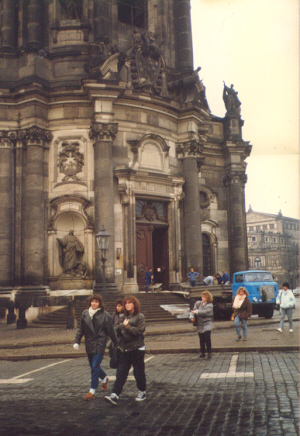 DDR workers oggle the girls from my school group. How many workers does it take to fill a wheelbarrow? Apparently about ten or so. The genious of socialism is that if you don't work much, you still get paid the same and everyone is equal (that is, poor). Notice again the soot-stained buildings, which have probably been restored to their original beauty since Reunification. |
 The Semper Opera was one building that was restored and re-opened under the East German regime. I met some musicians from Dresden at Mizzou when I was first learning German and I remember asking them about this building. I'm sure it's been restored properly since Reunification. |
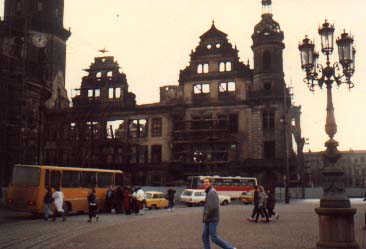 More ruins, strange colored cars, soot-covered buildings. |
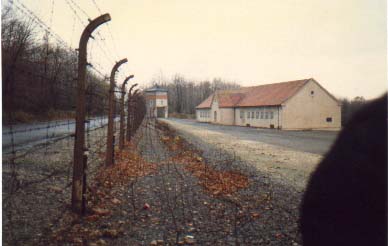 Our trip included a trip to Buchenwald, a work camp near Dresden. Not a death camp, inmates were mostly worked and starved to death. You might know this as the camp Elie Wiesel, the author, was in. We were shown this because it enabled us to hear the East German side of the story - namely that they weren't the criminals - they were communists, who were also persecuted by the Nazis. I'll never forget how one of our teachers stood up and said "I can't be silent. These camps were still kept open after the war, etc." Our poor tour guide probably wasn't used to Western German "in your face" being right at all costs. I felt quite sorry for her; she was quite nice. We also met with students at an arranged meeting outside of Dresden, which of course leads to further stories that I won't go into. |
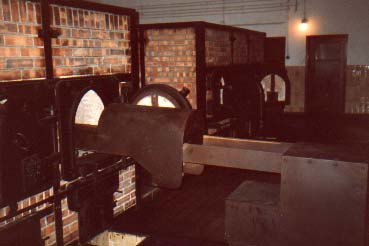 How can anyone deny that the Holocaust ever happened? One visit to one of these memorials and you'll never doubt it. |
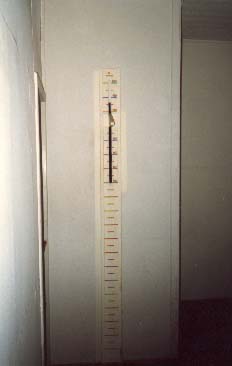 Prisoners were sometimes told to have their height measured. They'd then get a bullet in the back of the neck through the whole in the wall. |
 There were no restaurants or pubs to go to in East Berlin on even Friday night, so we stayed in our miserable hotel. You couldn't turn the heat down, you just had to open the windows. We had one practical joker in our group, namely Denis, a physicist from Switzerland.He targeted one other student in particular - he put toothpaste on the doorknob for when his victim got home, a sausage in his bed and threw his clothes outside the door. Here's he's admiring the water - came out of the tap fully oxidized. You'd have to wait for it to clear. We did stay in a beautiful restored castle in Dresden - it had been converted into a Youth Hostel. |
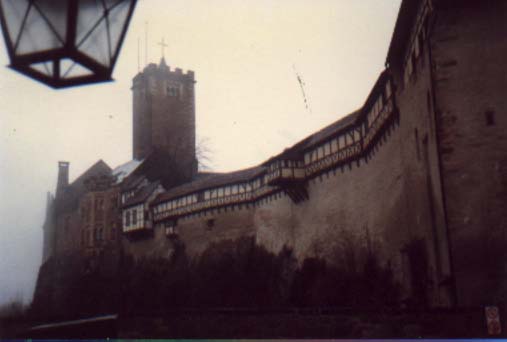 We also toured the medieval Wartburg Castle In Eisenach where Luther was hiding as an outlaw while translating the New Testament (ca. 1520) After many horrendous meals, polluted towns, kaputt highways, bone-crunching bus rides and controlled tours (Goethe House, Weimar, Meissen), we endured another long wait at the border and the relief of finally returning to West Germany late at night. I wish I could have taken a picture of the eerie border crossings, with bizarre yellow lights, fences everywhere, people in uniforms, etc. but that wasn't allowed, of course. Makes one understand freedom for the first time. |
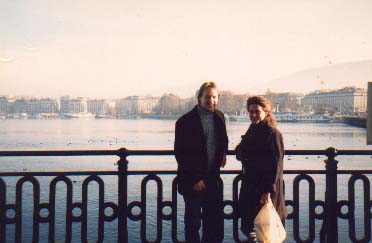 School ended just before Christmas and I was invited to Geneva, Switzerland. |
 They really do have a lot of watches in Switzerland. The shop windows glittered in gold. Notice the cuckoo clocks to the left. I also bought a few giant blocks of Toblerone chocolate and several Swiss Army knives as gifts; I found out they were cheaper back in the states, when I got back home. My German was much improved and I was much richer for all the experiences of this trip. |